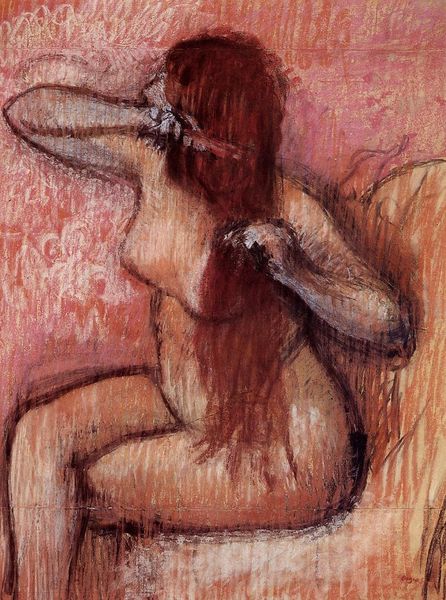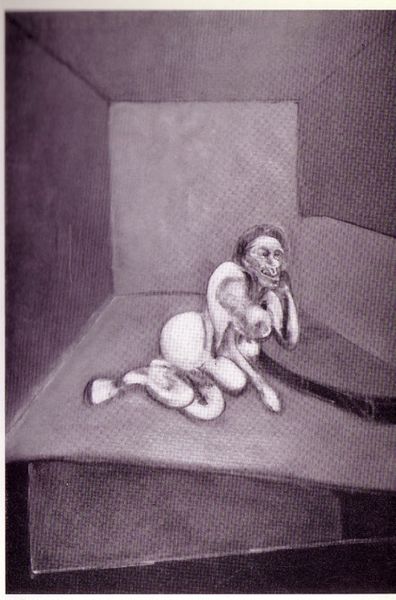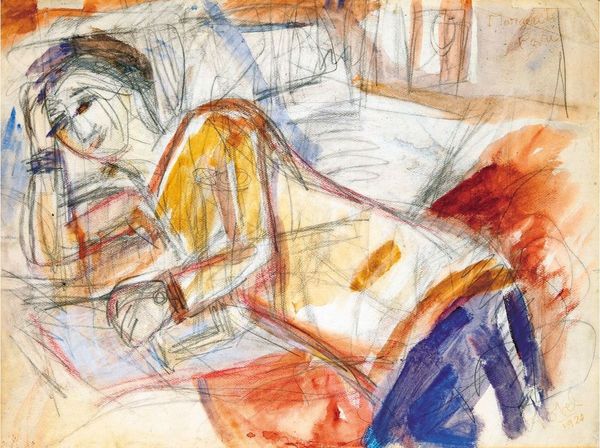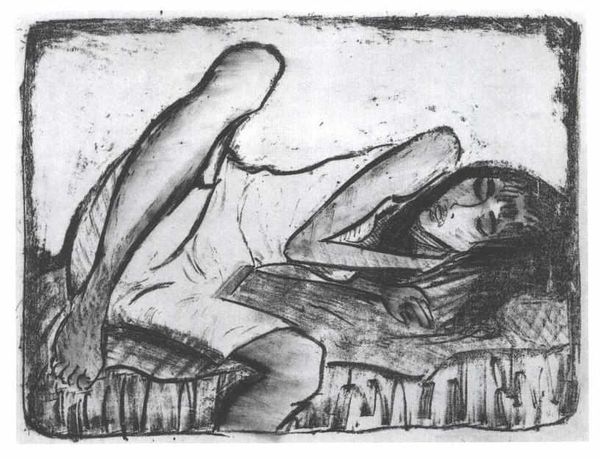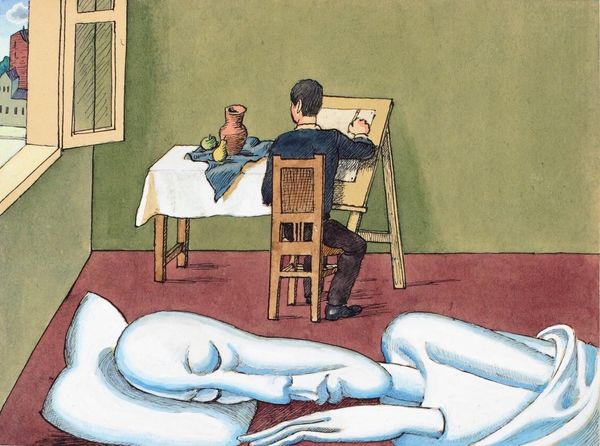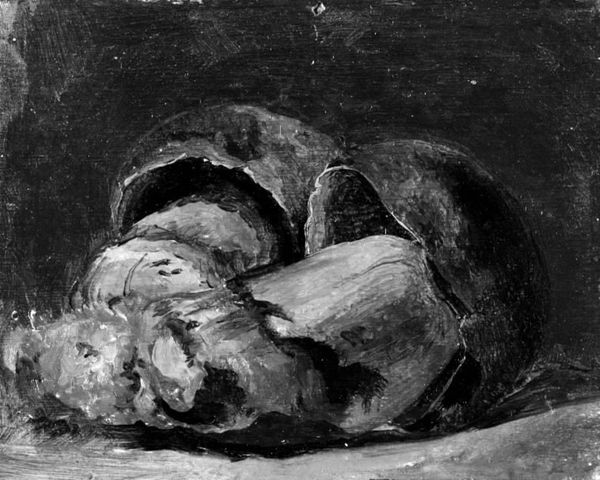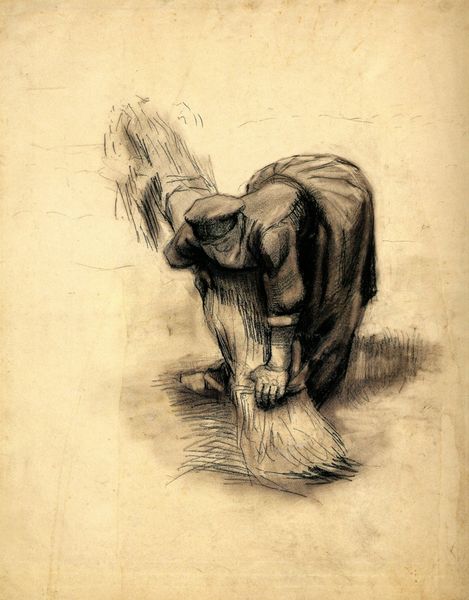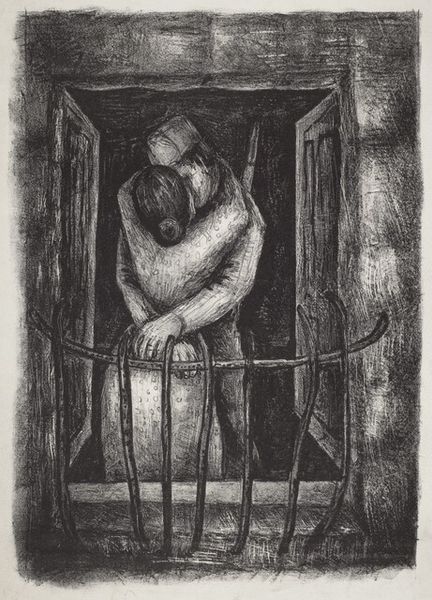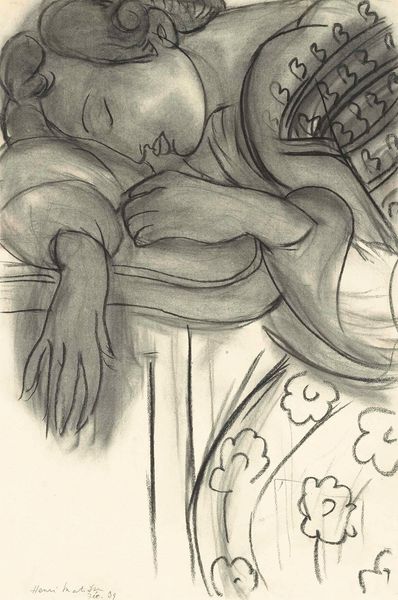
painting
#
portrait
#
cubism
#
painting
#
figuration
#
nude
#
portrait art
#
modernism
Dimensions: 80 x 55 cm
Copyright: Pablo Picasso,Fair Use
Curator: We are looking at Pablo Picasso’s "Women's Toilette" from 1961. Painted in his distinct cubist style, it portrays a woman in a somewhat unconventional seated pose. Editor: It strikes me immediately with a rawness. The colors, primarily earthy browns and muted grays, create a sense of quiet melancholy, a stark intimacy. You can practically feel the coarse texture of the paint he’s using. Curator: Absolutely, and this was painted relatively late in his career, when he was very established. What’s interesting is seeing Picasso still push against conventional ideas about femininity and representation, at a time when popular imagery of women was being very carefully shaped through film and magazines. Editor: The visible brushstrokes emphasize the materiality. It's not striving for photorealism but declaring itself as paint, as labor. Look at the construction of the figure - it seems less about objectifying a woman, and more about his actual experience grappling with a physical representation. It's about the activity and labor of painting, not about a subject, and by that activity subverting expectations for figurative nude painting.. Curator: True. In many ways the angular forms and flattened perspective invite the viewer to actively reconstruct the image, challenging traditional ideas about looking and the male gaze in art. Editor: Consider the social context too. We're on the cusp of a second-wave feminism, when these conventional ways of depicting and representing women are being publicly challenged and questioned for the first time, at scale, making his subversion here extra powerful. Curator: It’s as though, even within a seemingly domestic and private setting, he’s critiquing those larger public constructions of womanhood. Editor: It’s about pushing and pulling, and even breaking the conventions in both life and the artwork materials. This piece, with its almost defiant approach, demands a reevaluation of how we look and consume art itself. Curator: It leaves you wondering how much agency he was affording his subjects, even as he seemed to challenge artistic traditions in the cultural milieu that produced his artwork. Editor: Indeed, it’s a piece that makes us consider our own role in looking, the materiality, and the societal weight it carries.
Comments
No comments
Be the first to comment and join the conversation on the ultimate creative platform.

